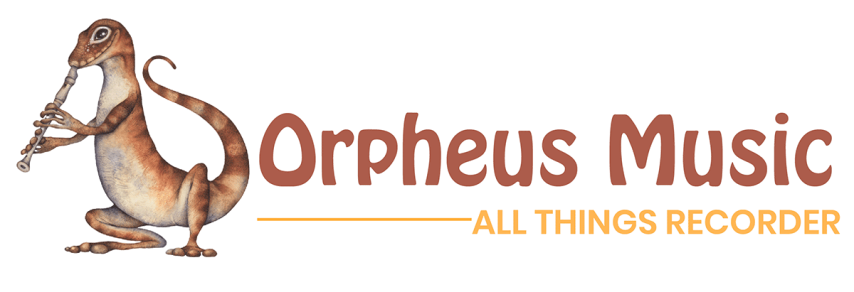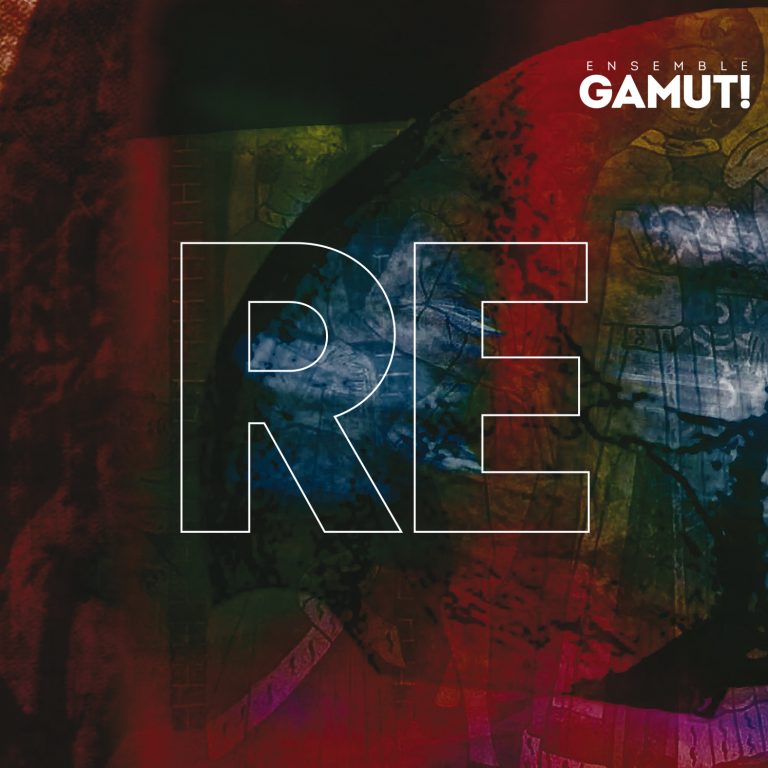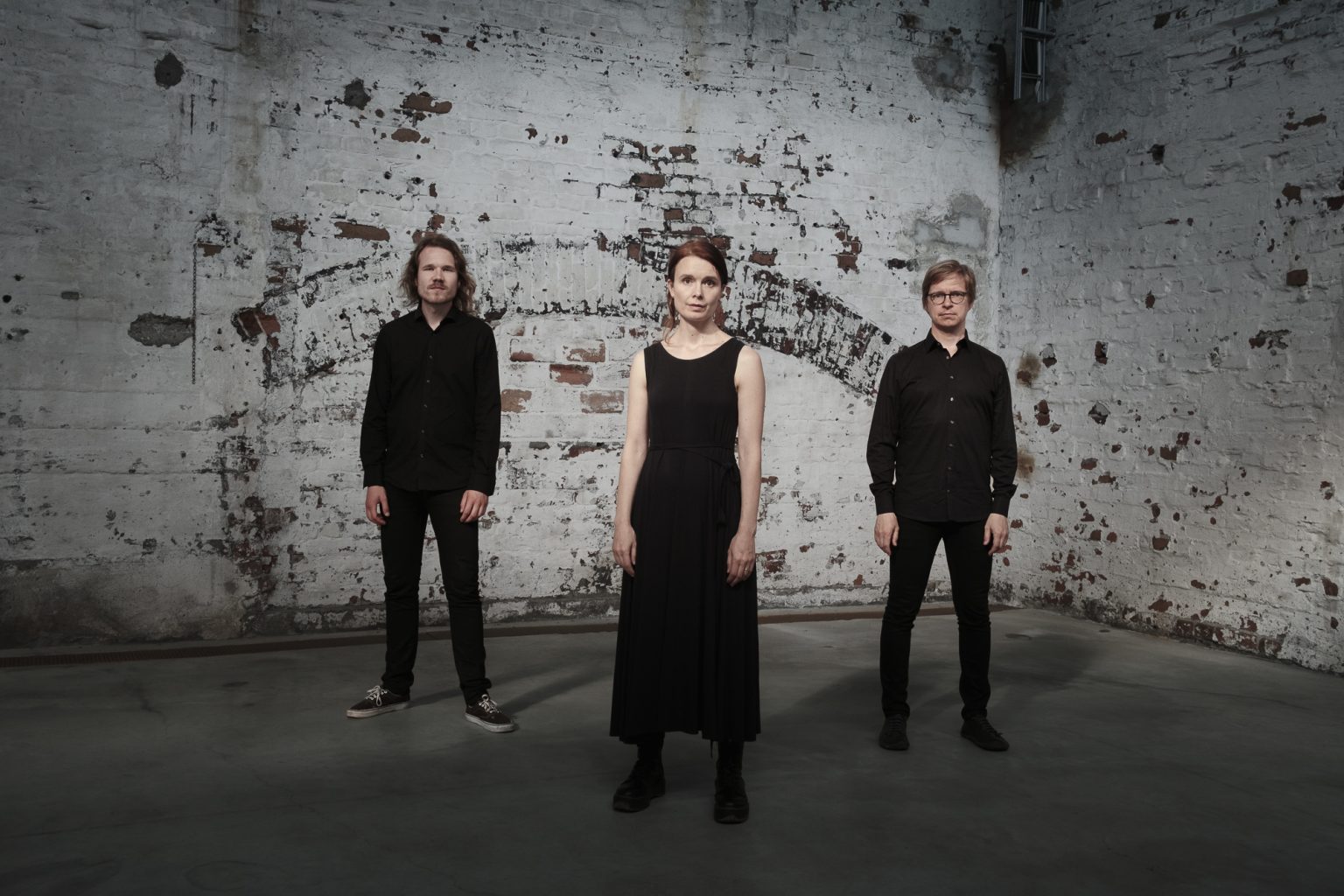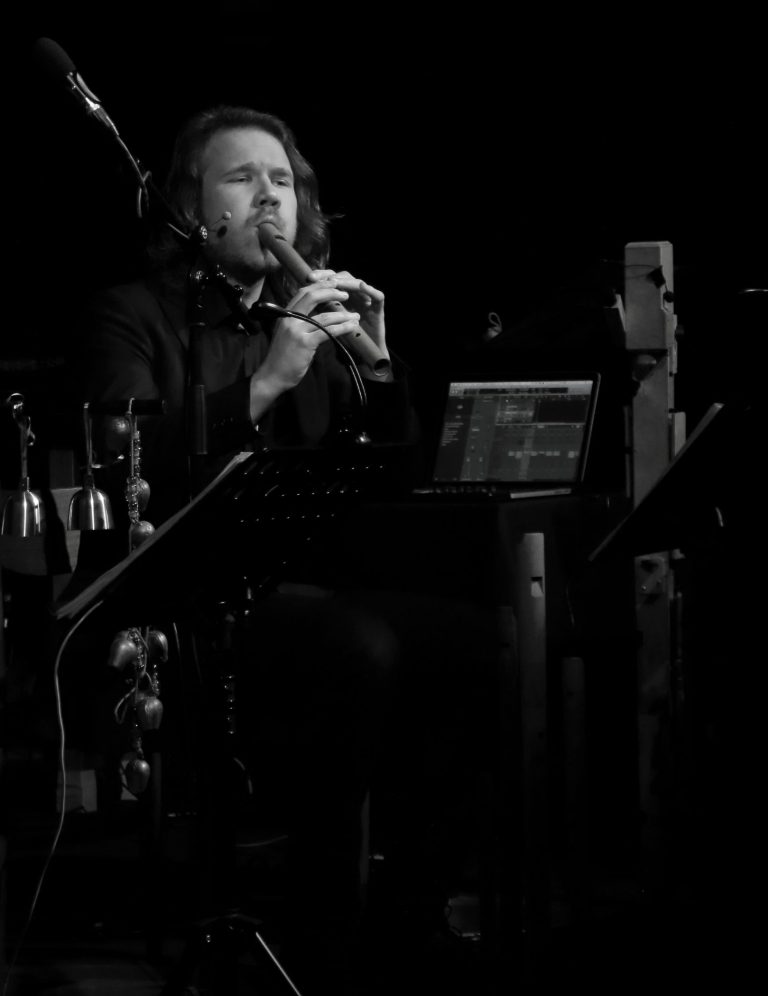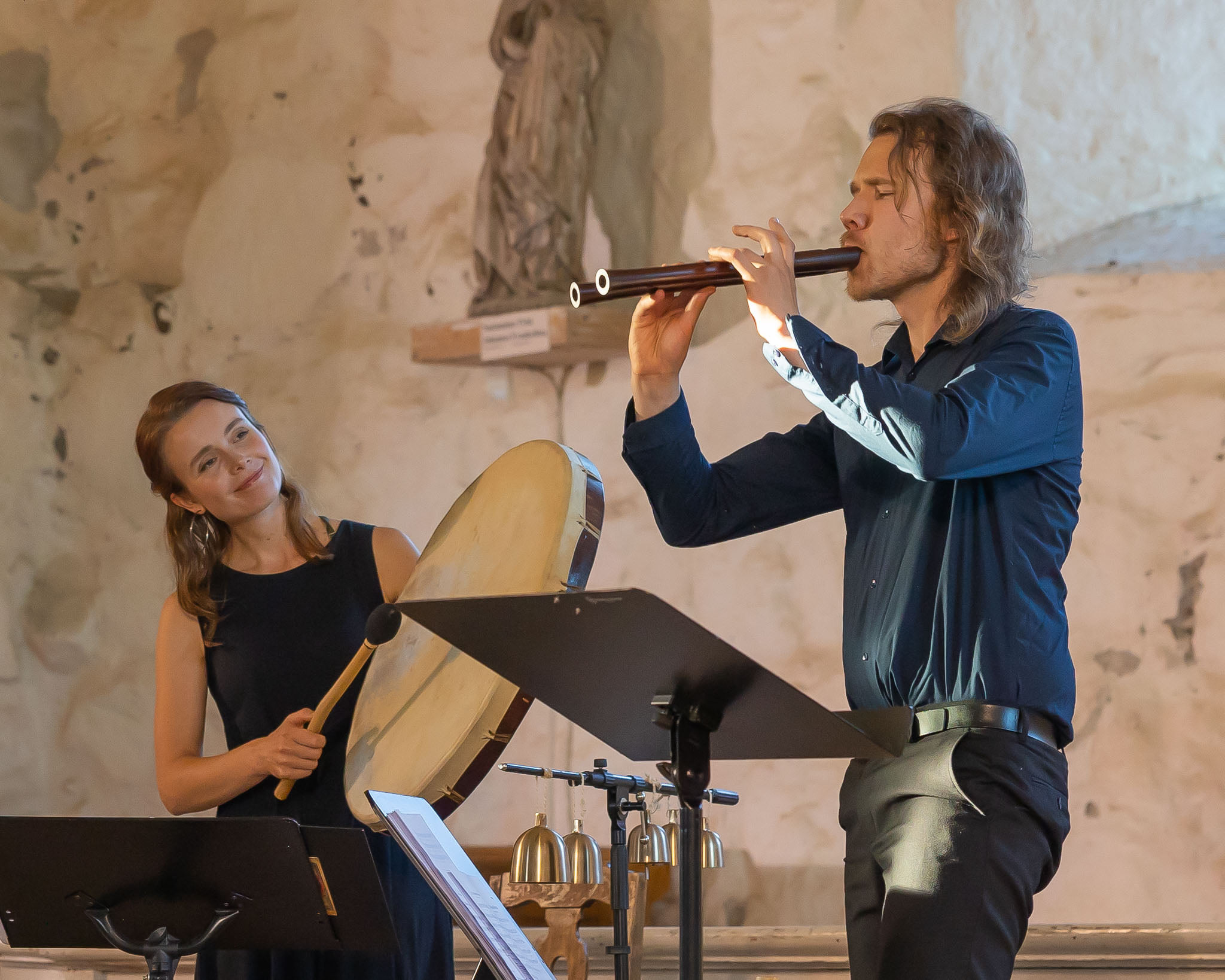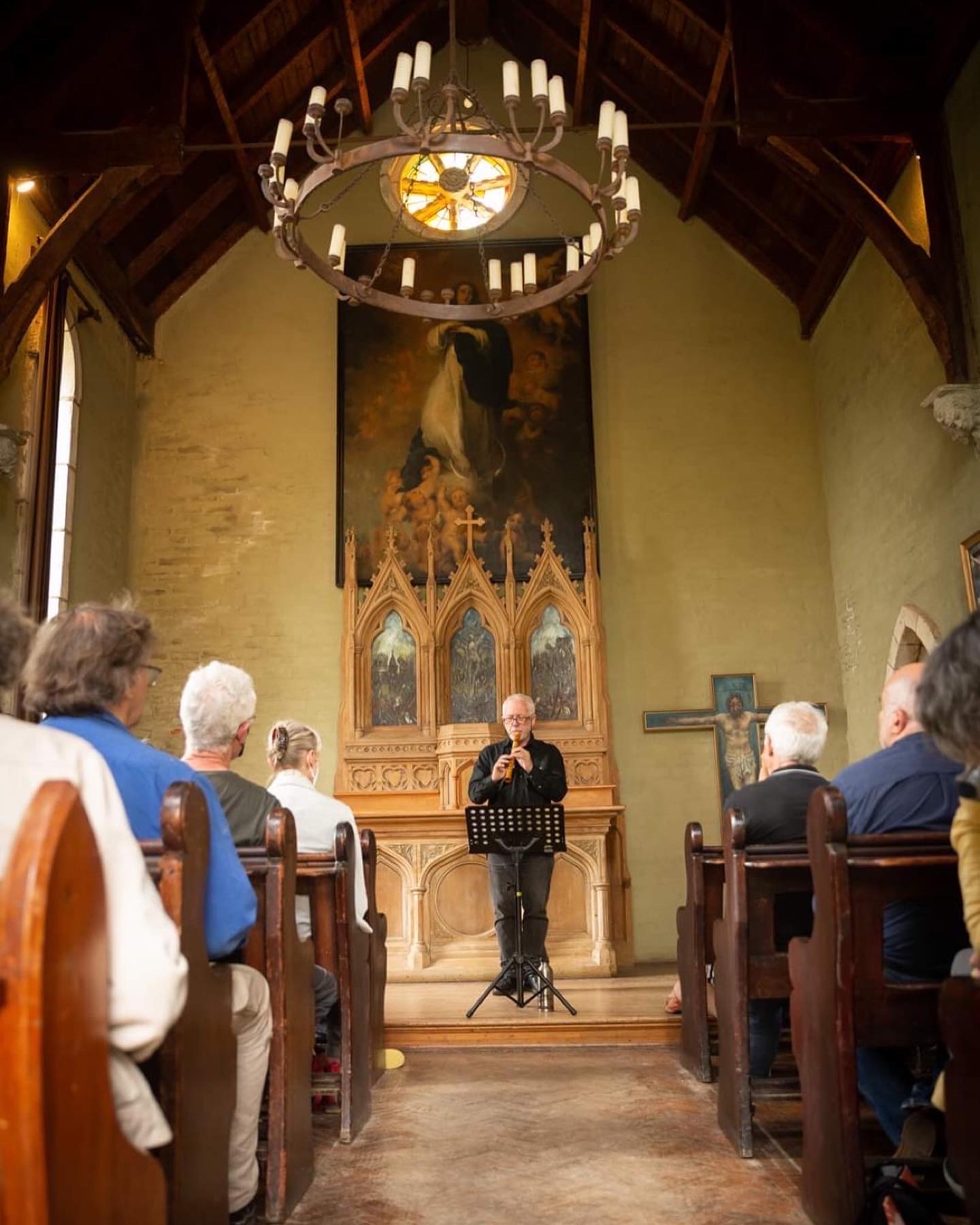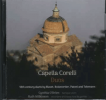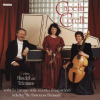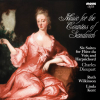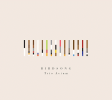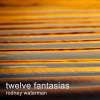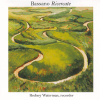
2022 Interviews - Ruth Wilkinson, Rodney Waterman, Juho Myllylä
RE - Ensemble Gamut! - an Interview with Recorder Player Juho Myllylä
Juho Myllylä is a recorder player, guitarist, singer and songwriter. He studied recorders at the Conservatory of Amsterdam with Jorge Isaac, and graduated with a master’s degree in 2020.
Juho works with the world-renowned renaissance recorder ensemble The Royal Wind Music since 2016. With the Finnish Ensemble Gamut! Juho is in constant search for new ways to perform early music through the fusion of medieval and renaissance music, folk music, improvisation and electronics. Their critically acclaimed debut album UT was released on Eclipse Music in 2020. Juho has also performed solo at such venues as the prestigious Concertgebouw Amsterdam.
While traveling in Amsterdam, Alex Joly meet Juho, so join us for this interview about Juho's journey with the recorder and his creative process in creating his newest album with Ensemble Gamut!
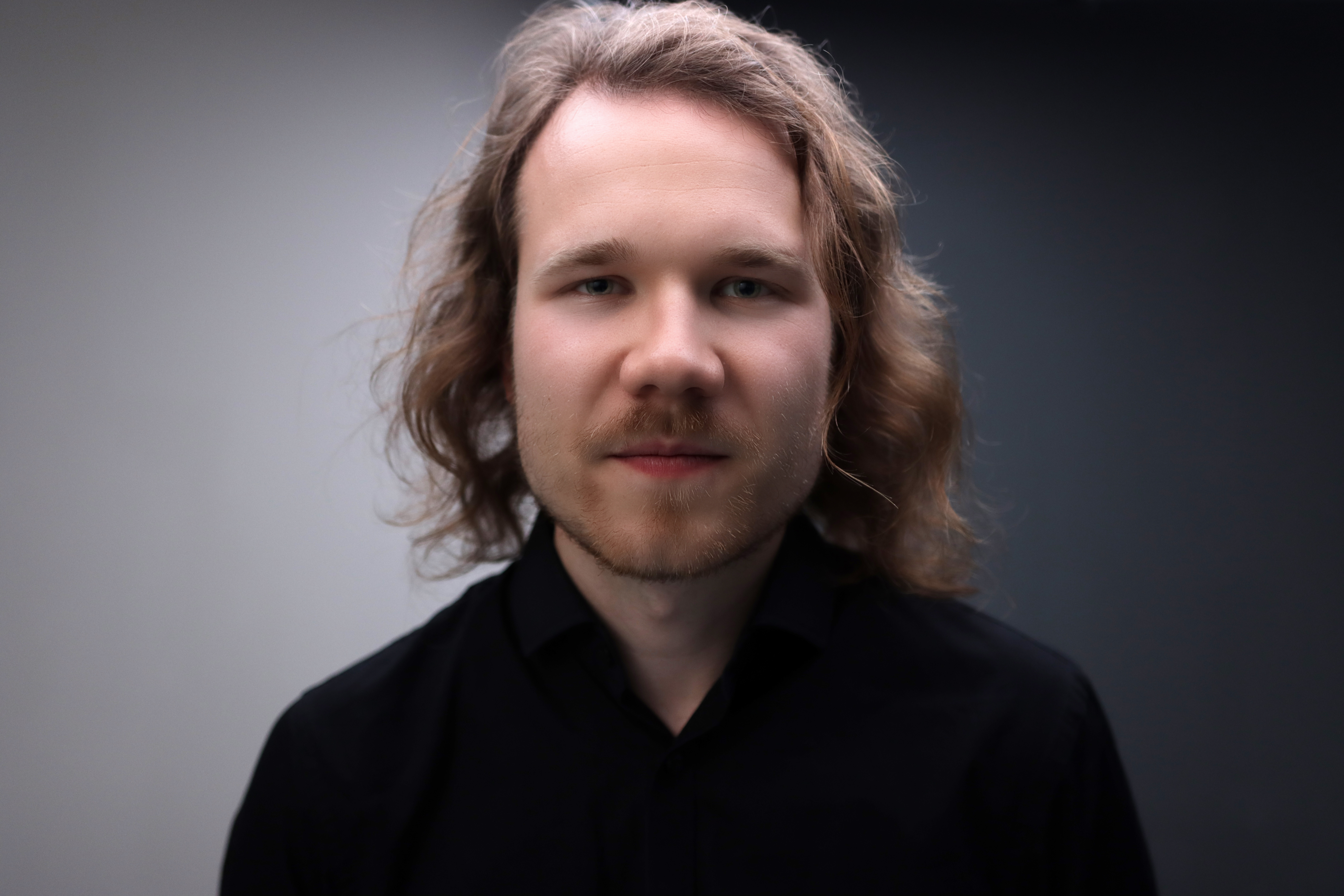
Firstly, how did recorder enter your life?
I started recorder lessons at 6 years old in Helsinki, Finland. I appreciate I was lucky to have a professional recorder teacher from the very beginning: Pekka Silén, a pioneer in Finland’s recorder and early music education. This is not something to be taken for granted as recorder is still too often seen as a beginner’s instrument, only to transition to a “real” instrument after a couple of years, and in many music schools the recorder is still taught by teachers of other wind instruments. Taught professionally by a true specialist and introduced as a serious instrument of equal worth alongside other instruments, as it should be, in both solo and ensemble lessons from the start, I immediately became fascinated with the recorder’s long and rich history as well as the strong presence in the music of today.
What was the role of music in the early years of your life?
I grew up in a musical family in Helsinki, Finland. My parents are both professional musicians, having worked most of their careers as church musicians (while my father was also a professional singer, choir conductor and music school director), so music was an integral part of everyday life in the household, and the direction to pursue music actively and professionally was the most natural one for me to go in.
What the biggest problem you've encountered in your journey of recorder playing and music?
The continuous work in progress of rethinking the recorder, and the obvious struggle that defines this type of work of trying the existing, supposed boundaries of our instrument. I have a tendency and desire to operate in a “marginal of a marginal” - push the recorder towards styles and genres it’s professionally still hardly present in, such as modern jazz and fusion, and wish to connect with audiences outside the recorder “bubble” too (as much as I enjoy being part of and supported by the global community bound together by the recorder!). As problematic and frustrating this passion at times may feel, it is on the other hand motivating, and a big part of what drives me further as a musician and artist.
What do you like to do outside of recorder/music that contributes to your musicality or rejuvenates your creativity?
I love watching a good movie, with the soundtrack obviously being a big part of the experience, but really appreciating and enjoying the whole experience. Film, together with music, can express and convey human emotions as real, sincere and touching as only life itself.
Now to your newest Album, RE: How did Ensemble Gamut! come to be? How did you all meet?
In 2017 Aino Peltomaa gathered a number of musicians to join an experimental improv collective, which resulted in the debut concert program of Ensemble Gamut! in May 2018. The idea was from the beginning a certain openness and flexibility, and while there have been projects with other musicians, the core trio around founder and artistic director Aino Peltomaa (voice, medieval harp, percussion) has remained the same and plays on both albums.
What is the story behind the ensemble's name?
The name of the ensemble is derived from medieval music theory (Guido of Arezzo), but also means a colour reproduction, a subset of colours. Kamut means “friends” in Finnish, and the word Kamu is also a shorthand way to refer to Finnish folk music (kansanmusiikki).
What is your creative process when you are collaborating with your fellow ensemble members?
Ensemble Gamut! is in ongoing search for something new through the fusion of medieval and renaissance music, Finnish folk music, improvisation and electronic soundscapes. I feel like the creative process brings out each of the members’ equally diverse backgrounds, wide-ranging musical influences and skills in an inspiring way. The electroacoustic and eclectic concept effectively utilizes the versatility of the musicians and allows space for freedom, exploration and improvisation. This is integral to our workflow and feels equally refreshing every time, enabling ever new aspects in the repertoire to be found.
Were there any compositions or composers in this album who challenged your artistic aesthetic or recorder techniques or playing styles in an unexpected way?
It’s interesting as I think it’s more the lack of composers (all anonymous or traditional) and the sparseness of the surviving and notated compositions as such, which are basically short plainchant or repetitive traditional melodies. So the challenge on RE lied in how to take the seemingly simple material and create something new and meaningful that resonates in the present moment. The workflow of Gamut! is very group-oriented and band-like in that no arrangements are written down, but just rehearsed together, memorized and of course always partly improvised and made up on the spot.
In terms of my recorder playing, it feels very personal and genuine, and I can say I didn’t have to force anything on the record but rather everything from instrument choices, sound colors and improvised solos came naturally, inspired by the collective creative process. I can also say we didn’t set expectations for the program and the arrangements, meaning everything (or nothing, depends how you look at it) becomes unexpected, but rather allowed ourselves to be freely directed where the music would take us in the process, and I’d like to believe that organic flow and spontaneity can be heard on the album.
On Piispa Henrikin Surmavirsi, a sort of proto-folk metal interpretation of an old Finnish runosong, a traditional text set on one of the traditional melodic patterns that constitute the repetitive structure that keeps building up until the big eruption (which in the storyline represents the moment where St. Henry gets brutally murdered by the peasant named Lalli), I actually sing lead vocals in my pop/rock voice, which, whilst natural to me, definitely posed the biggest contrast in the making of the album, and challenged me in that way as I haven’t previously had lead vocal duties in Ensemble Gamut!’s projects.
As an early musician as well as a contemporary artist, how do the two styles contribute to your sound in this album?
I feel like the aesthetics of early music - being the root, point of departure and source of inspiration - and a contemporary vibe coexist in a natural and effortless manner within this album. Aino, Ilkka and myself share the passion to approach early music in a fresh way and blending contemporary, folky and popular elements into the mix is in a way what has come to define the Gamut! sound. 5 years since its formation and the first steps in this direction as a collective, the musical ideas have obviously crystallized and taken a clearer, more personal shape what constitutes the sound of RE.
When talking about the sound of the album, I also have to give credit to our recording and mixing engineer Jyri Sariola and his Mimix Studios in Espoo, Finland, where we recorded, and the importance of the recording and production process in achieving the desired sounding result. Like on UT, we approached recording the album not like a traditional classical music ensemble would record in an acoustic often (church) space, but all of us in our separate booths in the studio (playing together through monitoring and headphones), which enables optimal mic placement for each instrument, clean signal (no leaking of other sounds) when playing with effects and processing the sound live, and the most flexibility in post-production and mixing.
How has your style evolved as an ensemble since your very first album "UT" ?
The title RE, next to being the second note of the musical scale (Gamut) and therefore the obvious successor to UT, also refers to the concepts of remaking, rearranging, reposting, recreating, renewing, re-entering and so on. I feel like the ensemble has evolved very organically over the last couple of years of working in a trio set-up. In terms of early music, the basso continuo elements of the baroque as well as the written 3-part renaissance polyphony of UT has given way to early medieval music and plainchant, which in turn has meant we could approach the music very openly and approach arranging the pieces more freely.
The Finnish folk music influence is more prominently present, not just in the sound of the traditional bowed lyres (jouhikko) but in the music and texts, and as opposed to UT with its several pure folk tunes, this time it’s more interconnected with the early music sources in that short repetitive folk melodies are intertwined with early chants and improvisations, often simultaneously.
The electronic soundscapes glue the elements together and add to the overall ambience and the feeling of a wide, open space. Notably all electronic sounds on RE are live processed sounds of the instruments, so no synthesisers were used like on some of UT’s ambient tracks. All in all RE serves as an honest statement of what Ensemble Gamut! in 2022 stands for.
Is the track sequencing significant? Any features?
The track listing follows the concert programme, inspired by the myth and legend of St. Henry as told in both sacred and secular manuscripts. The album opens with St. Henry arriving to the area of Finland (Sanctus Henricus/Sanctum Ericum), followed by a contemporary commentary by rap/spoken word artist Paleface (Veri) and travels through the medieval north, following in the footsteps of St. Henry and how the legend was perceived and documented in different surviving medieval sources. In just over an hour the album reflects upon a number of topical issues, such as colonisation, the conquest of new territories by a superpower, Finland’s geopolitical position between East and West, and conflicts and contradictions between religions.
Where and when can we see you perform? For us here in the Southern hemisphere - where can we listen to your album?
You can find and keep in touch with Ensemble Gamut! online at ensemblegamut.com, where you can also subscribe to our newsletter. We are active on social media on Facebook and Instagram as well as on our YouTube channel. Our album(s) are best listened to and purchased (in both digital and physical formats) on Bandcamp, by far the most artist- and independent label-friendly music platform there is, but our music is also available on Spotify and other streaming and download platforms.
What’s next for you? What are you looking forward to in 2023?
In 2023 I’m looking forward to playing more live concerts with Ensemble Gamut!. I’ll also be busy with The Royal Wind Music, with whom we will release two new albums (The Orange Tree Courtyard of Spanish renaissance music and Gratia Plena, a collaboration with vocal ensemble Psallentes directed by Hendrik Vanden Abeele). Next to concerts with Psallentes, The Royal Wind Music will play two new programs, one with music by Jan Pieterszoon Sweelinck and another one inspired by the painter Albrecht Dürer.
On top of our European concert engagements we organize our own recorder festival, the Open Recorder Days Amsterdam which takes place between 6 and 9 July 2023 at the Conservatory of Amsterdam. ORDA-2023 presents a colorful program with top international guest artists and offers plenty of inspiration and activities for all recorder lovers. Being part of the Team-ORDA with my Royal Wind colleagues Anna Stegmann, María Martínez Ayerza, Hester Groenleer and Francesca Clements is very exciting and I’d love to welcome recorder colleagues, players and enthusiasts from Down Under too to join the international buzzing atmosphere of ORDA for four days of all things recorder in the middle of the beautiful European summer.
Find out more about Ensemble Gamut!
Find out more about Juho on his website.
Bassano Ricercate - an Interview with Rodney Waterman
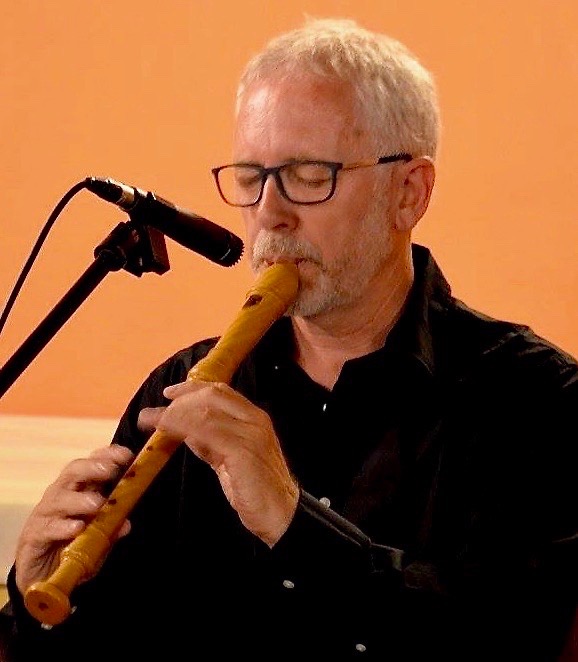 Rodney Waterman has just released his newest album Bassano Ricerate. Join us for a chat about his creative process in creating this exciting new album! Interview by Alex Joly.
Rodney Waterman has just released his newest album Bassano Ricerate. Join us for a chat about his creative process in creating this exciting new album! Interview by Alex Joly. What was the concept or inspiration for your newest album?
To record, for the first time, period repertoire that I have always found fascinating. My previous recordings focused on Brazilian folk/jazz and free improvisation. I have always been fascinated by the historical improvisatory fantasia and ricercar forms in music, so I wanted to challenge myself by attempting to understand, perform and record these beautiful, quirky, and esoteric Bassano solo pieces published in Venice in 1585.
What was your creative process while creating this album?
I kept visualising the ricercate (ricercars) as sinuous strands of sound. Their linearity is like a floating, winding, long, refined and articulated gossamer thread. The Ricercate really strike me as having an experimental, ‘contemporary’ feel. The looping, winding river in Dr Anneke Silver’s album cover art painting, is viscerally evocative of the structure of the individual ricercars.
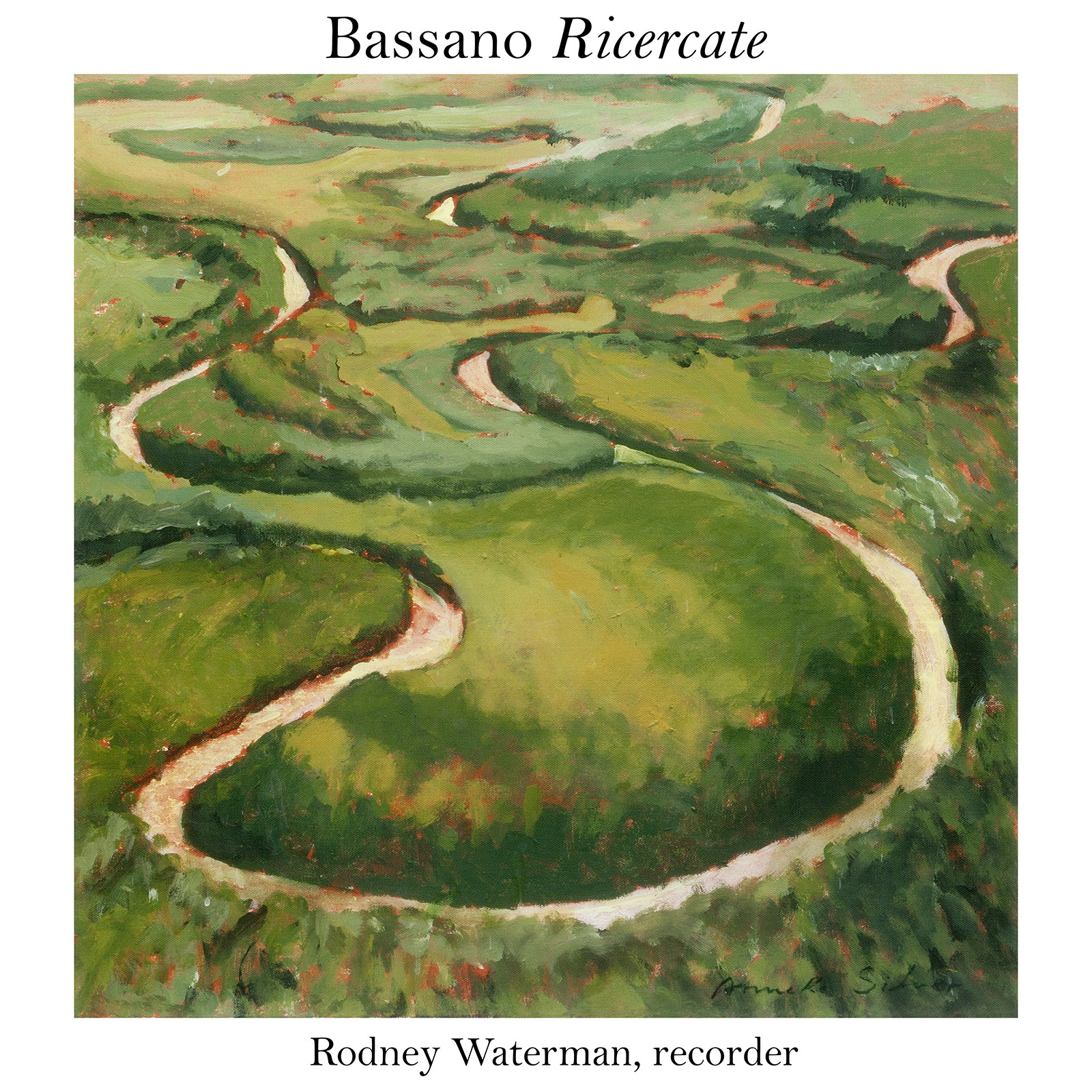 Cover art: painting by Dr Anneke Silver; 'Sunset reflected' (acrylic on canvas), 'Rivers: un -cut' exhibition, Perc Tucker Regional Gallery, Townsville, April 1 - May 1, 2016. Painting photographed for exhibition catalogue by Shane Fitzgerald
Cover art: painting by Dr Anneke Silver; 'Sunset reflected' (acrylic on canvas), 'Rivers: un -cut' exhibition, Perc Tucker Regional Gallery, Townsville, April 1 - May 1, 2016. Painting photographed for exhibition catalogue by Shane FitzgeraldHow did Bassano’s ricercate enter your musical life?
When I first acquired a “Ganassi” recorder made by Fred Morgan in 1980, I was eager to find suitable repertoire. Fred pointed me to the music of late 16th century Italian composers, Aurelio Virgiliano and Giovanni Bassano. I soon heard recordings of individual solo ricercars by these two composers performed by Frans Brüggen, Michel Piguet, and Australian player Greg Dikmans, all using “Ganassi” recorders by Morgan. I fell in love with the instrument's unique bold and beautiful tone. For two years, 1997 and 1998, I worked 2 days a week as an instrument tester for Morgan. This provided me with the chance to play-in some of the best recorders ever made, including many “Ganassi” instruments. Here in Fred's workshop, I often played all the published Bassano and Virgiliano solo instrument repertoire, suitable for recorder, over and over. I became very familiar with the intricacies of the higher upper register fingerings. I composed/improvised new, contemporary pieces for the g’ recorder, e.g. Zana as this instrument is very suited to exploration and invention.
What is a “Ganassi”Recorder? And how does it feature in your newest album?
Bassano describes the Ricercateas being suitable for “ogni sorte d’istrumento” (any sort of instrument) and “qual si voglia istrumento da fiato”(any woodwind instrument you want), especially cornetto(an instrument he played proficiently), flute or recorder; he also referred to the “viola”, which could mean either “de braccio” (violin family) or “da gamba”.
The Morgan “Ganassi” is a modern instrument derived and adapted from a historical one-piece renaissance alto recorder, with g’ (one above low Treble f’) being the lowest note. The Bassano ricercate range from bottom g’ up two octaves and an extra note to the high descant a’’’. The “Ganassi” has a cylindrical bore, flared to some extent at the bottom, which can result in an unusually fulsome bottom g’. The finger holes are bigger than those on a Baroque recorder, and the fingering, particularly in the high register, is unique, including the use of some tricky half-holes. The pitch of recorders at this time was generally thought to be a semi-tone higher than modern pitch, i.e. A466. Morgan made the instrument at this pitch, but often also made it in two pieces with alternative foot joints (joined by a cylindrical brass ring) so that the modern player could play at A440 and A415. I chose the A440 pitch for my recording as I preferred the ‘feel’ and ‘sound’ of this ‘lower’ pitch (than A466) and found that I could navigate the complex upper fingering more fluently.
Regarding its use in my recording, Ruth Wilkinson’s sleeve notes put this in perspective: “The choice of a “Ganassi” recorder in g’ for this project is well suited for the task. The range of the ricercare requires an instrument that is flexible and strong in tone in both the lower and upper registers. The Fred Morgan design... can reproduce the extraordinary two and a half octave range consistent with a detailed fingering chart published by Sylvestro Ganassi in the mid-16th century. The “Ganassi” recorder brings this music to life with its flexible and clarion tone.”
What drew you to Bassano and his musical compositions?
The late 16thcenturyin Europe, particularly Italy ,is a fascinating time in musical history, especially when you look at the contemporary advances in scientific understanding by Galileo Galilei (1564-1642) and his contemporaries, alongside the emergence in music of idiomatic instrumental forms, and the transition to the birth of opera in the early 17th century. Galileo’s father, Vincenzo, was a lutenist. In 1585 Bassano and his musical colleagues seem to be searching for a way of reaching beyond the confines of contemporary musical language. Bassano rarely succeeds in doing so in a dramatic way, but the “search” itself is the interesting part of the ricercar [ricercare (Italian); to seek] and this can be brought out in performance. I enjoy the challenge of trying to make sense of these intriguing compositions.
How do you balance considerations of historical authenticity playing music in 2022 that was created in 1585?
Like many students of recorder, I have familiarised myself with many and various writings on historical music performance and attempted to absorb the relevant fundamental elements. The first four lessons I had with my teacher, Kees Boeke in Pitigliano Italy in 1984, all focused on Ricercata Quinta by Bassano. In the end, I perform the Ricercate as musically as possible, preferring to be flexible and intuitive, playing an instrument I love dearly.
Where and when can we see you perform?
I performed the complete Bassano ricercate for the first time on Sat Nov 5 (2022) at the beautiful Bluestone Chapel at Montsalvat, a few days before I recorded them. I plan to find opportunities to perform this concert wherever I can throughout 2023. Please contact me if you would like me to perform them somewhere near you.
Where can we listen to your album?
The online album can be listened to and/or purchased through my Bandcamp page. Click here to listen now.
Click here to buy album now from Orpheus.
Capella Corelli - Duos - An Interview with Ruth Wilkinson
Before covid, Ruth Wilkinson and Cynthia O’Brien recorded an album in a 16th century church, Santa Maria Nuova, Italy. Alex Joly sat down with Ruth Wilkinson to find out more about this special recording.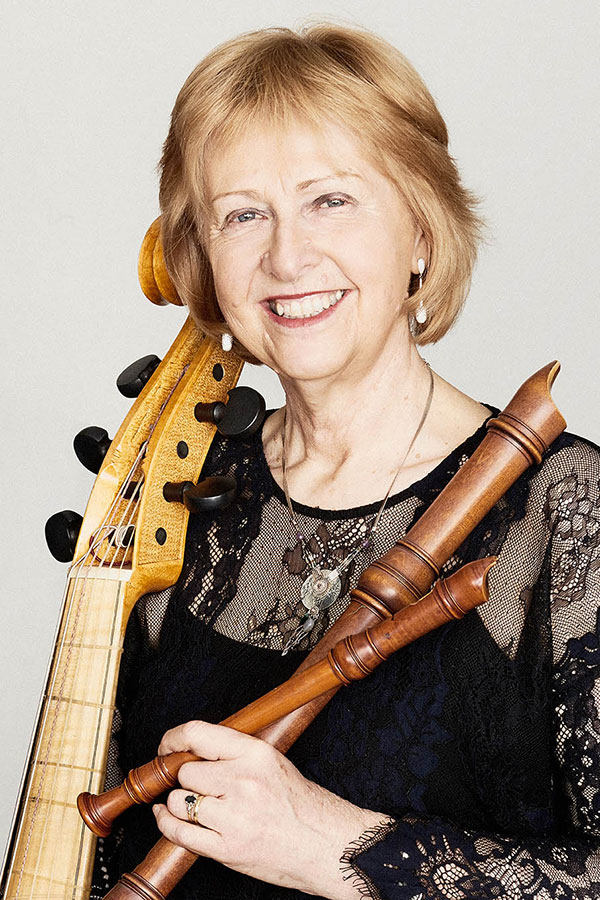
Where did you record the album?
The venue for this recording, Capella Corelli, Duos, was the renaissance, 16th century church, Santa Maria Nuova found on the hillside outside the walls of the Italian medieval city of Cortona. With my dear friend and colleague baroque violinist Cynthia O’Brien who now lives nearby and can see this wonderful church in the distance from the kitchen window of her home, I have been able to play many concerts there and spend many hours relishing the extraordinary acoustics of this building.
I have been blessed to visit the area in Tuscany many times and have been able to give many concerts there. This is the second recording of duets we have done together in this church and Cynthia, and I feel it has become part of our sound. Our first recording was well received including being CD of the week on the ABC FM afternoon drive program.
We really wanted to do another. The local priest, Don Ottorino entrusted us with the use of the space for as long as we needed. We were very grateful for his generosity. All we needed was to coordinate our dates between Australia and Italy, organise sound equipment that was not practical to bring from Australia.
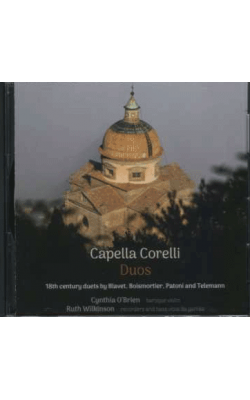
What role did the acoustic have in this album? What was the concept or inspiration for your newest album?
Basically, we were inspired by the acoustic and wanted to further preserve this sound from the 16th century with some new repertoire.
For this recording, we as Capella Corelli explore 18th century duo repertoire of composers Telemann, Blavet, Boismortier and Patoni. The duo repertoire is intimate, charming, and exquisite. It creates the experience of listening into a private conversation between two old friends (which we are!). The duets are like shared stories spun into beautiful melodies with each instrument revealing a little more of these musical tales as phrases are phrases are imitated and tossed around between them.
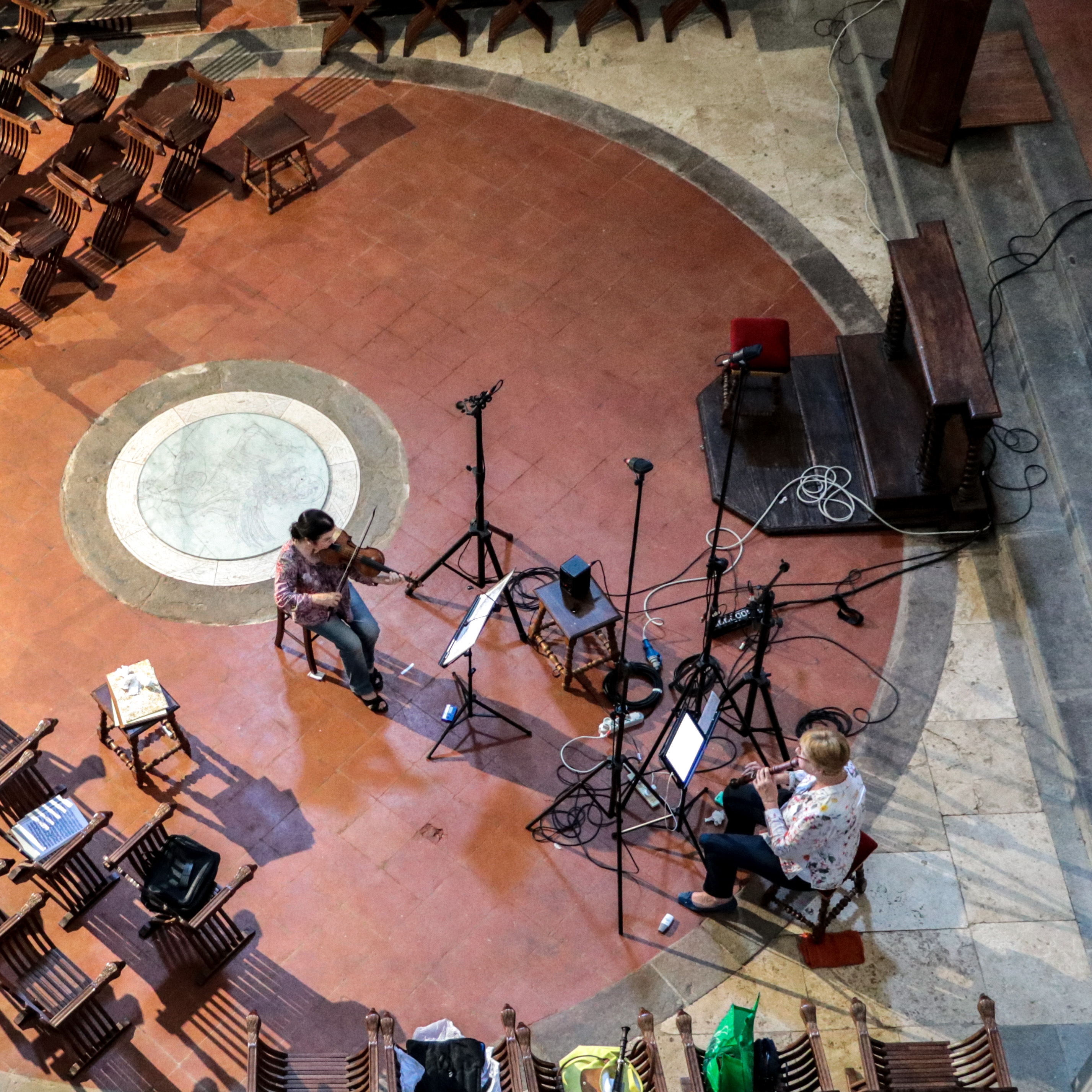 (above: Cynthia and Ruth recording inside of the church with an incredible acoustic).
(above: Cynthia and Ruth recording inside of the church with an incredible acoustic).
Were there any unexpected challenges in the rehearsals or recording process?
Making a recording away from the relative safety of the modern recording studio always brings challenges and we had many. The quiet of the Tuscan hills would seem like a dream location but the elements and the 21st century can get in the way at the most crucial moments. Our talented and patient producer and sound engineer, Alex Stinson dealt with all these interruptions with good cheer as we worked together to capture this beautiful duo repertoire using recorders, baroque violin, and viola da gamba. Alex clearly understood our musical aim and helped us all the way to get our desired sound and recording.
Our appreciation must also be expressed to Martin Wright and Move records for the final booklet design and production of the CD.
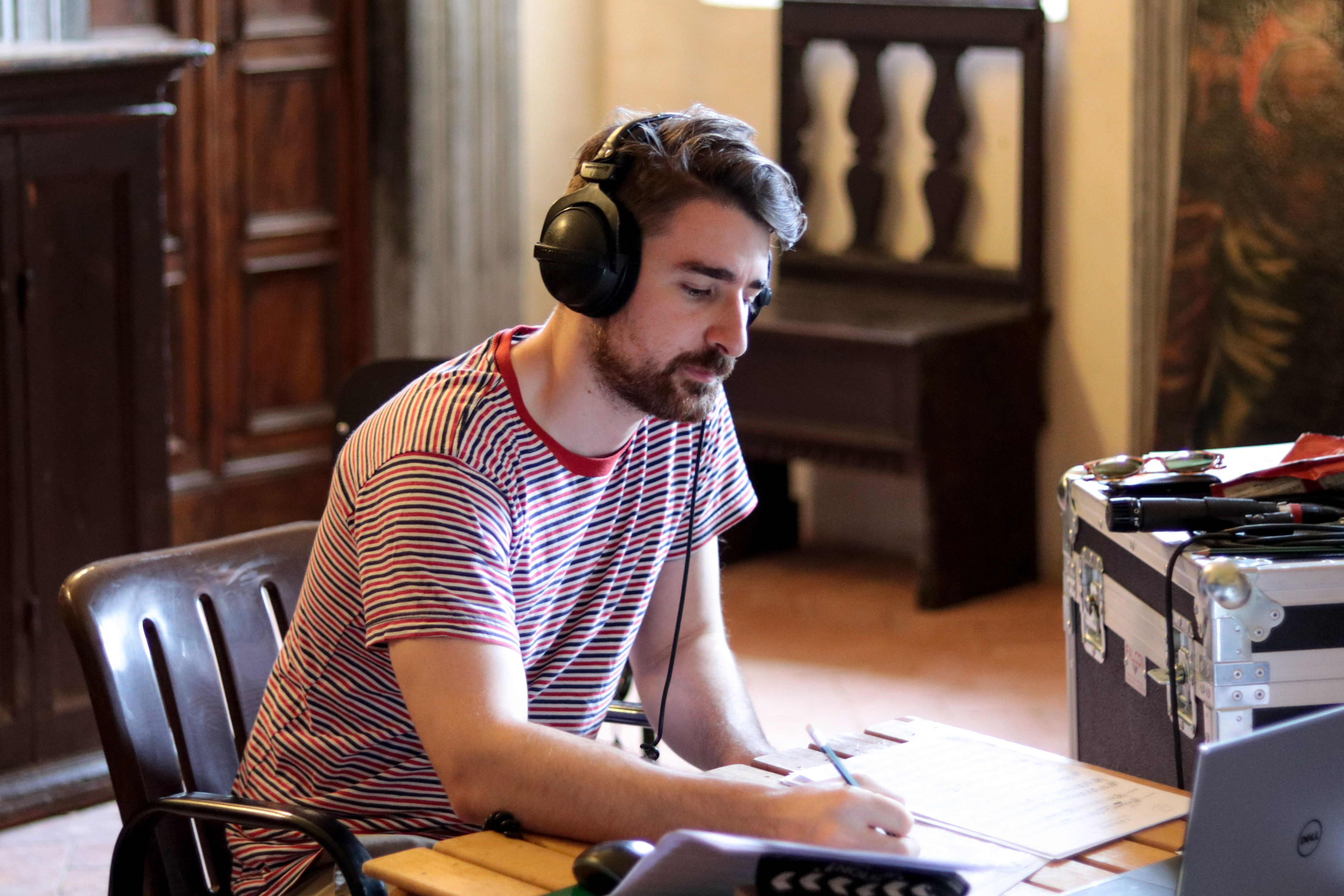
(above: Alex Stinson - producer and sound engineer for the album)
What was it like to return to recording with Cynthia O’Brien? How has your collaborating style evolved with Cynthia O’Brien in returning to make this album?
Cynthia and I have been musical partners and dear friends for 40 years. Cynthia and I met when she formed the trio Capella Corelli with then harpsichordist, Paul Thom. For many years we have been performing with our dear colleague, harpsichordist John O’Donnell. After our first season of concerts in Canberra, where Cynthia was based, we were quickly noticed by Music a Viva and we toured the country extensively for them Our musical lives were very busy and included workshops and recordings. We were part of the early music revival introducing a new way of playing music of the 17th and 18th centuries to audiences who were keen to hear previously unfamiliar composers especially from the 17th century. Times have changed and our audiences are now very knowledgeable but equally enthusiastic about historical performance practices. We are no longer pioneers but part of a mainstream acceptance of performances involving original instruments.
We were also very involved in the nascent years of the Musica Viva in Schools program. We travelled the depth and breadth of NSW with our harpsichord in the back of the car giving three concerts a day in different venues often 100 kms apart. It was exhilarating introducing our instruments and our music to children all over the state. They all listened with such fresh ears and were always asking us wonderful questions about our lives and our music.
What recorders did you use to make the recording?
I am mostly playing the Voice Flute (an instrument a little larger than the tenor, tuned in D). My voice flute was made by the late Fred Morgan, and I consider the instrument like one of my best friends. Whenever I pick it up it is like no other instrument. It’s warm flexible sound, ease of articulation and ability to partner the baroque violin as an equal voice have made this musical experience a joy. After all these years the instrument sings on. Later in the recording I play the soprano recorder also by Morgan and a joy to play.

(above: Cynthia O’Brien - left and Ruth Wilkison - right).
How did our 2020/2021 lockdown affect your album/musical life?
The covid lockdown has certainly interrupted all our musical lives and in the case of this Cd it certainly contributed to a slower release that would be normal. I am in greet admiration of the covid recordings and projects that did appear by talented recorder players all over the world and here in Australia. All our preforming lives have suffered and we all have our personal stories of how this lockdown has affected us.
For me my relationship with music was challenged but now there is hope of getting together with our professional colleague again the mind starts s to create and plan new projects and the fingers are itching to fly again. This new CD and its reception whilst recorded well before the horrors of covid, has personally given me an injection to my belief that music matters.
The CD is available through Orpheus and Move Records. If anyone wants to contact me personally about its availability contact through my Facebook page.
Ruth Wilkinson is very active as a recorder, viol and violone player and over her varied career has toured extensively throughout Australia, New Zealand, Asia and Europe. She has a diverse discography of some 20 CD recordings which document Ruth’s musical life from medieval and renaissance music with La Romanesca, to the baroque with the trio Capella Corelli and Cynthia O’Brien, Ludovico’s Band and the 21st century with Trio Avium. Most recently she has begun collaborating with The Recorder Co-op, and the viol ensemble Consortium and Auncient Hermony with Vivien Hamilton.
Ruth studied early music at the Schola Cantorum Basiliensis in Switzerland with Hans-Martin Linde and Jordi Savall and has taught recorder and Historical Performance Practice and early music ensembles for many years at the University of Melbourne. In 2012 she was made an honorary associate of the Monash University School of Music. She has taught a generation of talented professional recorder players.
Find more of Ruth Wilkinson's Recordings here.
